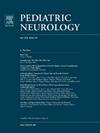CDKL5缺乏性障碍患者癫痫住院负担的测量
IF 3.2
3区 医学
Q2 CLINICAL NEUROLOGY
引用次数: 0
摘要
背景:关于CDKL5缺乏性障碍(一种罕见的发育性癫痫性脑病)患者使用医院服务的信息有限,其证据可能有助于服务计划。因此,利用国际CDKL5疾病数据库中379名基因验证个体的基线和纵向数据,我们旨在调查该队列中癫痫相关和其他住院率以及相关住院时间。方法:结果变量是家庭报告的终身住院次数和癫痫发作(管理和/或调查)和非癫痫发作相关原因的平均住院时间。这些变量是根据性别、年龄组、基因变异组和一生服用抗癫痫药物的数量来检查的。使用负二项回归将相关分别表示为住院率和住院时间的发生率比和几何平均比。结果:2880例住院2728.4人/年,其中2 / 3与癫痫发作有关。婴儿比老年人更有可能住院,随着年龄的增长,效应值逐渐减小。男性因癫痫发作相关的治疗和非癫痫发作相关的入院率略高。终生使用六种或更多种抗癫痫药物与使用三种或更少药物相比,癫痫发作管理的住院率更高。癫痫和非癫痫原因的中位住院时间为5天。结论:考虑到CDKL5缺乏性障碍的住院负担,特别是学龄前儿童的住院负担和抗癫痫药物的多样性,迫切需要更好的癫痫发作管理。本文章由计算机程序翻译,如有差异,请以英文原文为准。
Measuring the Burden of Epilepsy Hospitalizations in CDKL5 Deficiency Disorder
Background
Information on the hospital service use among individuals with CDKL5 Deficiency Disorder, an ultrarare developmental epileptic encephalopathy, is limited, evidence of which could assist with service planning. Therefore, using baseline and longitudinal data on 379 genetically verified individuals in the International CDKL5 Disorder Database, we aimed to investigate rates of seizure-related and other hospitalizations and associated length of stay in this cohort.
Methods
Outcome variables were lifetime count of family-reported hospitalizations and average length of stay both for seizure- (management and/or investigative) and non-seizure-related causes. These variables were examined according to gender, age group, genetic variant group, and lifetime number of antiseizure medications. Using negative binomial regression associations were expressed as incidence rate ratios and geometric mean ratios for hospitalization rates and length of stay, respectively.
Results
There were 2880 hospitalizations over 2728.4 person-years with two thirds seizure related. Infants were much more likely to be hospitalized than older individuals, with decreasing effect sizes with increasing age. Males had slightly higher rates of hospitalizations for seizure-related management and for non-seizure-related admissions. Lifetime use of six or more antiseizure medications was associated with a higher hospitalization rate for seizure management than use of three or fewer medications. The median length of stay was five days for seizure and nonseizure reasons.
Conclusion
There is an urgent need for much better seizure management in CDKL5 deficiency disorder given the hospitalization burden especially in the preschool age group and the multiplicity of antiseizure medications being used.
求助全文
通过发布文献求助,成功后即可免费获取论文全文。
去求助
来源期刊

Pediatric neurology
医学-临床神经学
CiteScore
4.80
自引率
2.60%
发文量
176
审稿时长
78 days
期刊介绍:
Pediatric Neurology publishes timely peer-reviewed clinical and research articles covering all aspects of the developing nervous system.
Pediatric Neurology features up-to-the-minute publication of the latest advances in the diagnosis, management, and treatment of pediatric neurologic disorders. The journal''s editor, E. Steve Roach, in conjunction with the team of Associate Editors, heads an internationally recognized editorial board, ensuring the most authoritative and extensive coverage of the field. Among the topics covered are: epilepsy, mitochondrial diseases, congenital malformations, chromosomopathies, peripheral neuropathies, perinatal and childhood stroke, cerebral palsy, as well as other diseases affecting the developing nervous system.
 求助内容:
求助内容: 应助结果提醒方式:
应助结果提醒方式:


